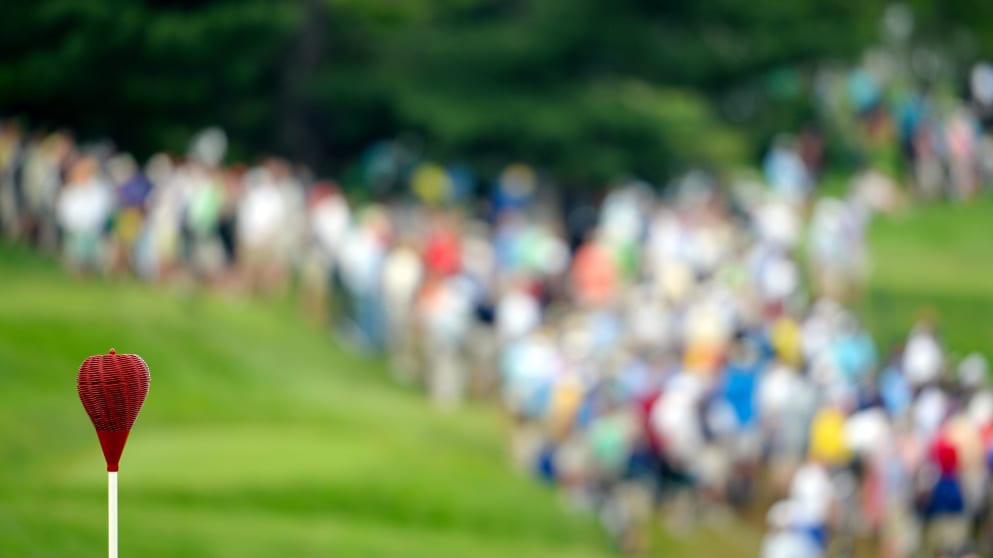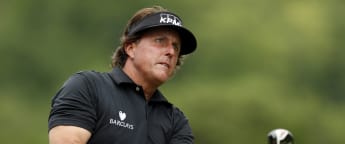The unusual sight of wicker baskets instead of flags on the greens has attracted plenty of interest this week, especially after Lee Westwood ricocheted off one on the 12th when tied for the lead on day one, but they are very much interwoven within the rich fabric of Merion’s history.

Westwood struck the basket on the fly with his third to the par four 12th only to see his ball rebound back down the fairway. The result was a double bogey six en route to an opening round of 70.
But what’s the history behind these rather unusual objects on Merion’s East Course? According to the USGA historians, it appears they were not used when the course opened in 1912 with earliest reports found in an article in the July 2, 1915 edition of Philadelphia’s Evening Public Ledger.
“The new hole pins at Merion have been the subject of much favourable comment, not alone among the men stars who played there last, but by the women who played in the Griscom Cup matches three weeks ago, as well. Instead of the usual flags, which, when a head wind is blowing are invisible, wooden pins, with alternate stripes of black and white, and large, wicker, pear shaped tops, are used. On the out holes the tops are red, on the in holes yellow, and they can be seen for a mile. William Flynn, the Merion greenskeeper, is the originator.”
Merion may have been the first American club to utilise wicker basket standards but their use can be traced back to early origins in Scotland and Europe. Historical records reveal that the earliest evidence of cane and basket hole markers was in the 1850s where a resilient bamboo cane was surmounted with a basket top.
While William Flynn applied for a patent on August 7, 1915, which was granted on February 29, 1916, it is thought they were inspired by Hugh Wilson, the principal designer of both Merion East and West courses, who went abroad to study the golf courses of Great Britain in 1912 prior to the opening of the East Course.
While there he visited the likes of Prestwick, Formby, Hoylake, Troon, Muirfield, North Berwick, St Andrews and the Heathland courses around London such as Sunningdale and would inevitably have come across similar basket designs.
Tony Nickson, an English golf historian from Royal Lytham & St. Annes Golf Club, visited Merion in April 1989 and presented the club with a copy of a painting by Michael Brown entitled “First International Match Scotland v. England, Prestwick Golf Club, 1903.” The painting shows a caddie holding a golf standard with a basket.
Golf pins topped with flags were far more universally adopted, especially after the standardisation of the hole size in 1894 and with the introduction of metal cups used to hold the stick. Flags indicate wind direction and intensity and are used nearly everywhere. But Merion Golf Club does not provide outside influence on decision making. There are no yardage markers and laser range finders are not allowed to assist on shot decisions.
The first nine baskets remain the original red, while the second nine baskets are no longer yellow but a more visible orange colour. It’s not clear why the change in colour, perhaps because orange was easier to see, or perhaps because the mowers in the greenkeepers’ shed were red Toro for the front nine and orange Jacobsen for the back and as extra touch-up paint in the maintenance shed was used to paint the baskets, perhaps they ran out of yellow paint and switched to Jacobsen orange.
The wicker baskets have been used for each USGA championship at Merion since the 1916 US Amateur, with the exception of the 1950 US Open.








